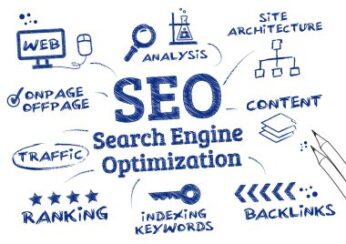As highlighted in Search Engine Journal’s article “6 SEO Concepts To Focus On Right Now,” the search marketing industry must continually adapt to new technologies deployed by search engines like Google and Bing. Understanding how these technologies impact search engine rankings is crucial for SEO professionals looking to optimize their strategies effectively. Here are six essential developments in SEO that you should focus on right now.
1. Understanding Content Blocks
One common SEO mistake is creating content focused solely on a list of keyword phrases. Traditional SEO strategies often involved inserting keyword phrases into title elements and using variations in headings. However, modern search engines no longer interpret webpages purely through keywords but rather through topics and topic taxonomies.
A topic taxonomy organizes content into categories and subtopics, much like an old-school directory structure. For instance, a taxonomy might categorize topics as Business > Ecommerce > Technology Vendors. According to Google’s research, topic taxonomies help search engines understand hierarchical topic structures, which are valuable in web search and question answering.
When search engines analyze title tags and headings, they are determining the topics and subtopics of the content. Therefore, it’s essential to create content that is organized by topics rather than just keywords, as this aligns better with how modern search engines interpret webpages.
2. Emphasizing Topic Relevance Over Keywords
Rather than focusing on keyword density, SEO professionals should emphasize the relevance of their content to the overall topic. Google and Bing are increasingly sophisticated in understanding the intent behind searches, which means content must be comprehensive and relevant to the user’s query. By structuring content around topics, you provide a richer user experience that aligns with how search engines assess page value.
3. Leveraging Semantic SEO
Semantic SEO involves creating content that addresses the broader context of a search query. This approach goes beyond matching keywords to understanding the meanings and relationships of terms within the content. Using semantic SEO can enhance your content’s visibility as search engines look for pages that provide a complete answer to a user’s query. Incorporate related terms, synonyms, and contextually relevant information to strengthen your content’s semantic value.
4. Optimizing for User Intent
SEO is no longer just about rankings; it’s about understanding and fulfilling user intent. Search engines prioritize content that aligns with what users are actually looking for, whether it’s information, navigation, or a transaction. To optimize for user intent, analyze search queries to identify what users are hoping to achieve and tailor your content to meet those needs. This approach not only improves SEO performance but also enhances user satisfaction.
5. Structuring Content for Enhanced Readability
The structure of your content plays a significant role in how search engines and users perceive it. Using headings, bullet points, and short paragraphs can make your content more digestible, which can improve engagement metrics like time on page and bounce rate. Enhanced readability also helps search engines understand the hierarchy and main points of your content, which can positively impact rankings.
6. Utilizing Schema Markup
Schema markup is a powerful tool that helps search engines better understand the content on your site. By adding structured data, you can provide additional context about your content, which can lead to enhanced search results, such as rich snippets. Schema markup can be applied to various types of content, including articles, products, events, and more, providing a competitive edge in search visibility.
Adapting to these modern SEO concepts will help you stay ahead of the competition and align your strategy with the latest developments in search engine algorithms. By focusing on topics, semantic SEO, user intent, content structure, and schema markup, you can enhance your site’s visibility and effectiveness in search results.
Click here to explore how TotalWeb Partners can help you stay ahead of the SEO curve and enhance your online visibility.
Article with all rights reserved, courtesy of Search Engine Journal.









